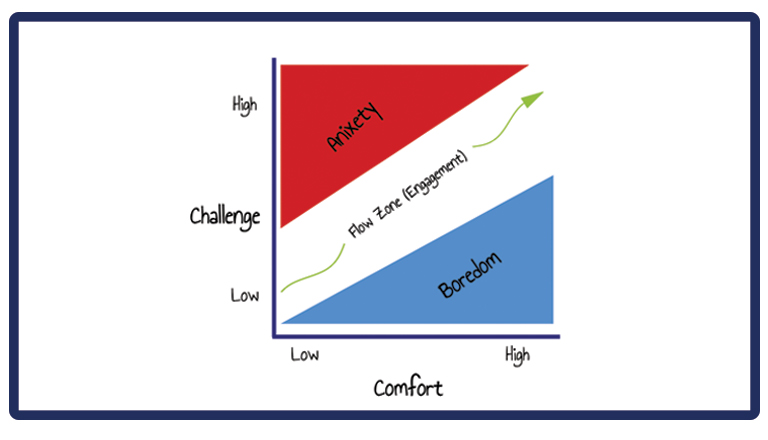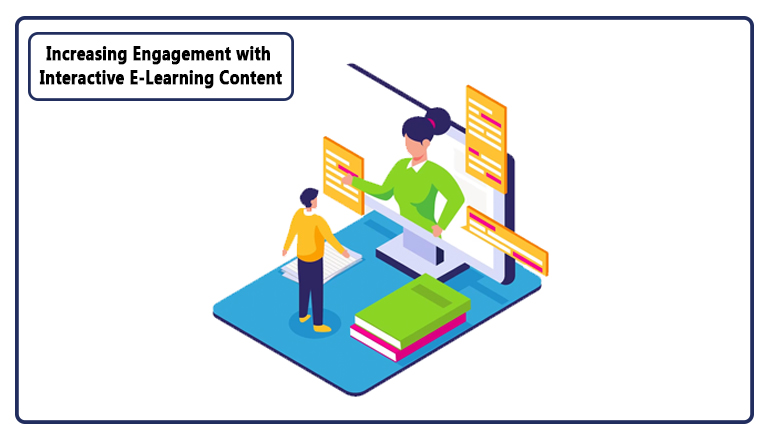Studies show that more than 41.7% of global Fortune 500 organizations already use some form of self-paced e-learning. Moreover, the corporate e-learning market is expected to grow by over 250% between 2017 and 2026. However, despite the rise of e-learning as a valid learning modality in most organizations, driving learner engagement remains a challenge. In fact, a study of 200 organizations using 28 different learning management systems shows that driving engagement is the number one challenge that 71% of organizations face when deploying e-learning programs. In this blog post, we’ll take you through a few tips to help you increase your learners’ engagement with the content of your e-learning programs.
First things first, why care?
The Importance of Engagement
Before we dive deep into how to build content engagement, it is essential that you understand why it even matters. Now, to understand the value of engagement in learning, you need to be acquainted with the psychological theory of flow.

According to positive psychologist Mihály Csíkszentmihályi, flow is the state of mind a person reaches when they become fully immersed in an activity. At flow, you lose your sense of time and become deeply engrossed in what you are doing. Flow brings the best work out of you, helps you overcome challenges, and spurs your creativity. Flow theory has long been associated with intellectual and creative pursuits, but its application to learning is of no less value.
In the learning context, flow helps learners stay focused on the learning activity, overcome learning challenges, gain new skills, retain learning, and, more importantly, enjoy the experience. So, how can you create e-learning content that helps learners stay in a state of flow?
Flow can only be achieved in the golden mean zone, which lies between the ‘low-stress zone’ which induces boredom and the ‘high-stress zone’ which induces anxiety. Keeping your learners in that ‘flow zone’, therefore, boils down to maintaining a healthy balance— a balance between challenge and comfort. Let’s see how you can build both into your content.
Driving Engagement by Building Challenging Content
To drive learners to a state of flow while engaging with your content, you need to make the learning content challenging enough but not too challenging that it leads to de-motivation. The crux of this equation is to understand well your learners’ current level of knowledge and their desired next step. Here are practical ways you can use to achieve just that.
1. Correct Placement
Have a level placement testing methodology in place to ensure you are setting your learners to the appropriate learning paths for them. There is nothing more boring than having to go through two hours of content you already know. A crisp placement test centered on real-life knowledge and skills goes a long way to save you this trouble.
2. Leveled-Up Programs
Building on the previous tip, ensure you design your learning content in a layered format where learners progress from one level to another. There are two ways of building levels into your content: linear design and circular design. In linear learning design, you create your learning levels in a way by which the higher levels contain ‘more’ terminology and concepts that are not included in previous levels but build on them. In circular design, you create your learning content in a way that all terms and concepts are covered at all levels. However, there is ‘higher contextual depth’ as learners progress through the levels.
Which methodology to use will be a question of the knowledge or skill area your learners aim to learn. Language, for example, is a skill area that is better suited to a circular design, while engineering, for example, is better suited to a linear design.
3. Personalized Learning Paths
Once you have designed your content in a level format and put a placement methodology in place, it is essential to recognize that even at the same level of knowledge, learners will have variations in what they know or do not know. Therefore, try to leverage AI-powered learning platforms that automatically build personalized learning paths for every learner. If such technology is not available for you, simply provide learners the freedom to choose what to learn. A simple ‘skip’ button can help learners choose what they want to learn.
4. Real-Life Applications
To add a sense of challenge to the learning content, learners must feel that the content can help them overcome some real-life challenges or problems they face. You can make your learning content challenging to the current level of learners by adding interactive scenarios, simulations, or project applications that help challenge them to move to the next level of real-life skill.

Driving Engagement by Boosting Learners’ Comfort
To reach a state of flow, learners must not feel overwhelmed by the level of challenge in the learning program. You can ease learners’ tension and make them feel more comfortable with the learning process by following some of these best practices.
1. Microlearning
Microlearning is the practice of chunking down learning content into bite-sized pieces that can be learned in under 10 minutes. This practice helps decrease your learners’ cognitive load and enables them to benefit from mind breaks as they progress through the content. So no matter how complex a piece of information is, your learners will have the energy to go through it because of a rested mind. Leverage the pause points that come with microlearning to provide learners with ample opportunities to rethink and reflect.
2. Gamification
The gaming industry is estimated at a staggering US$ 202.7 billion worldwide, enjoyed by children and adults alike. And this is no surprise! Games are fun, competitive, and totally exhilarating. You can achieve a similar level of fun and engagement in your learning programs by designing them around game models. To instill gamification in your programs, you need to build into them these three elements: competition, leveling, and rewards. Consequently, you will have training programs that not only increase learners’ comfort but even excite them.
3. Focusing Objectives
An excellent way to capture your learners’ attention is by starting every module with a focusing objective. And please do not confuse them with learning objectives. Learning objectives are what instructional designers need to design successful programs; focusing objectives are simply-stated objectives that help learners understand what they will be ‘focusing’ on in the module.
Stated bluntly in a statement format, focusing objectives can be less impactful. In fact, a more effective strategy for focusing your learners is to start your modules with a case study, scenario, quiz, or game that highlights a learning gap they have. This should be sufficient to focus their attention throughout the module and drive their engagement.
4. Frequent Feedback
Have you ever heard the saying, ‘practice makes perfect’? Well, it’s wrong. Practicing mistakes makes you only perfect at making mistakes. Likewise, effective learning requires constant feedback to drive positive behavioral change. Not only does constant feedback drive learning effectiveness, but it also boosts learners’ comfort. Learners feel supported when they get constructive feedback and encouraged when they receive positive feedback. Add feedback to your games, case problems, scenarios, etc. to increase learners’ engagement. It also helps if you can provide learners with a mentor or learning support specialist to answer their questions and provide guidance when needed.
Create Custom E-Learning Content to Increase Learners’ Engagement
These were a few tips that can guide you in building learning programs that help learners achieve a state of flow. In XpertLearning, we create highly interactive custom e-learning content for you. If you’re interested in knowing more about our custom content solutions, check out our wide array of offerings here.

